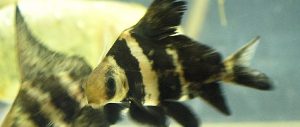Despite earning the nickname “river-pig” for its rotund appearance, the finless porpoise is also revered as a river god. When a storm is brewing, these creatures are known to make repeated, small leaps out of the water. Fishermen call it “saluting the wind” and, warned of the coming storm, know to tie up their boats. They often follow the porpoises too: the porpoises go where the fish are.
When the baiji, or river dolphin, was declared functionally extinct in 2007, the finless porpoise became the Yangtze River’s last surviving mammal. Only a thousand or so live wild in the river basin and that number is falling by 6.4% each year. Experts predict the finless porpoise will be extinct in 15 years.
But China is doing almost nothing to protect the animal. Only around 30 people, including students, are specifically engaged in researching the species.
“You never once harmed us, you never once asked for anything, but because of us you are heading for extinction.” These lines were taken from “A Letter to the Finless Porpoise”. The authors, members of the Green Source Environmental Association at Central South University of Forestry and Technology, carried out a three year survey of the species, but only saw a finless porpoise in the wild once.
In the summer of 2011, some 100 university students participated in a WWF-funded project called “In search of the last refuge of the finless porpoise”. They conducted surveys and public education activities in 96 communities in 11 cities, both on the middle and lower reaches of the Yangtze and around Poyang and Dongting lakes. The fishermen were surprised by these unexpected visitors: “Why protect the finless porpoise?” they asked.
The students’ surveys found that the majority of people could not distinguish between the finless porpoise and the pufferfish; less than half were aware that finless porpoise numbers are falling and only a tiny minority could accurately state the dates of the year when fishing on the Yangtze is banned.
The students participating in the project came from 10 different universities in the Yangtze River basin, including Three Gorges University, Anhui University, Nanjing University, Jiangxi University of Finance and Economics and Zhongnan University. They were a mixed bunch: only a few were biology students, some had been following the fate of the finless porpoise for three years, while others had never heard of it. During the entire period of their summer survey, they only spotted a finless porpoise three times. Old fishermen recounted how, in the past, the animals would leap out of the river as often as birds flew across it, but since the 1990s, this has been a rare sight.
The river god is no longer revered. At a forum to wrap up the project, held at Jiangxi Poyang Lake Wetlands Park in early January, the results from the 3,396 questionnaires were revealed. Almost half of respondents said they were unwilling to receive training on conservation of the finless porpoise, while one third were unwilling to become volunteers for the cause.
“One fisherman in his forties told me he had seen more than 10 dead porpoises, killed by water pollution,” reported Li Min from Jiangxi Normal University’s Blue Sky Environmental Association. “The fisherman hadn’t bothered to report it – ‘They’re already dead, what’s the point?’ he said.”
The students found that local residents knew even less than the fishermen and just remembered the baiji. “As soon as you mention the finless porpoise, they’ll start talking about the baiji,” said one participant, Hong Xiufeng. The researchers had hoped to get sponsorship to fund more local education, but “businesses weren’t interested in protecting the finless porpoise. They were indifferent,” said Hong.
“There’ll be no river pigs left within a decade,” said Wang Wuyi, a 49-year-old who grew up by the Yangtze. A former fisherman who now works feeding the porpoises at the Tongling Freshwater Porpoise Reserve, Wang has reached the same conclusion as the experts.
Speaking at a meeting with local fishermen, deputy head of the Nanjing Fisheries and Harbours Office, Yang Zhebin, explained: “Every year we find several dead finless porpoises, most with injuries inflicted by machinery. But the corpses take more than a week to float to the surface, so it’s impossible to tell if those wounds were incurred before or after death.”
Yang went on: “Some have no visible injuries, but after an autopsy we discover they have liver diseases caused by pollution or eating unclean fish. Some have blood traces in their lungs, indicating they may have been knocked out by the illegal practice of electrofishing and subsequently drowned.”
Cheng Ran, a scientist at the Tongling Reserve said: “The changes on the Yangtze are a reflection of China’s economic development. How many species will we consume for the sake of GDP?”
Reports on Yangtze protection and development compiled by the Chinese Academy of Sciences’ Nanjing Institute of Geography and Limnology show that 100,000 tonnes of fish were caught in the Yangtze in 2009, just one quarter of the 400,000-tonne catch recorded in 1954. In the lower reaches of the river, where most fish are migratory, there were 230 different species of fish in the 1970s. By 2007, only one third remained.
The Yangtze finless porpoise is the only freshwater subspecies of the finless porpoise, and its sole habitats are the middle and lower reaches of the Yangtze, and Dongting and Poyang lakes. In spite of its 25-million year history, it seems the Yangtze no longer has space for this creature.
Professor Wang Ding heads up the study of cetaceans at the Chinese Academy of Sciences’ Institute of Hydrobiology. He said that “the basic method of protection is to work with the communities where the animal lives.” But preventing human use of Yangtze reserves is a tougher task than protecting reserves on land. All the reserve staff can do is strengthen management of fishing, shipping lanes and projects such as port construction.
The reserve has no law-enforcement powers. If staff see illegal fishing or sand-dredging, they attempt to stop it – but they are not taken seriously. “What’s your reserve going to do about it?” Chen recalls being asked once.
“Conflict is fierce, and nobody expects a quick solution,” said Wang Ding. “You can’t impose restrictions on the whole of the Yangtze just to protect the finless porpoise.”
The Tongling Reserve Management Office is on the same island where Wang Wuyi lives. The sign outside – Anhui Tongling Baiji Conservation Site – has long been spotted with rust. This “home” for the baiji, built in 1987 at a cost of almost 10 million yuan (US$1.6 million), never hosted a single baiji. In 2000, it became a nature reserve for the river pig. Today, 11 finless porpoises live in this home once built for their cousin.
The state has almost no specific measures in place to protect the finless porpoise – only those left over from its failed efforts to save the baiji.
Currently, China has three national, two provincial and two municipal finless porpoise reserves. Over 50 finless porpoises have been relocated to Tongling. Forty of the animals are kept at the Hubei Shishou Tian’ezhou Baiji National Reserve, where they feed naturally. The Institute of Hydrobiology in Wuhan houses seven in an aquarium where they are fed by humans.
The locals all know how fond Wang Wuyi is of the river pig, but even he doesn’t want to keep working at the reserve: “We have no money and can’t hold on to staff. Two researchers have left to take up university teaching posts.”
His words are echoed by Wang Ding: “Money is always an issue – as a cause, we can’t compare with the giant panda. But more important is building up personnel and improving the capabilities of reserve staff.” Wang said his hydrobiology institute is the core of China’s research efforts into the finless purpose, but that even including students, there are only 30 researchers here – again, far fewer people than work with the giant panda.
Chen Ran has a master’s degree in ecology, making him the best-qualified of the reserve staff. He said one problem is that porpoises at the reserve are not being returned to the wild, which may lead to inbreeding.
In 1989, a list of protected animals was published, and the finless porpoise granted Class II protection. A new list has not yet appeared, but experts say that, when it does, the finless porpoise will be promoted to Class I, in place of the baiji. It would be a dubious honour, but Wang Wuyi, Chen Ran and Wang Ding all hope it would bring more attention to the fate of this species.
Others are more sceptical. Wang Yan, a student at Hohai University, recalled the words of a middle-aged fisherman at the meeting with Nanjing fisheries official Yang Zhebin: “I don’t object to promoting the finless porpoise to Class I protected status, but I think it’s meaningless. The government doesn’t care or do anything. Making it Class I is just for appearances. That’s common in China.”
Wang Tao is a reporter at Southern Weekend, where this article was originally published. She would like to thank Tang Wenjing of Jiangxi University of Finance and Economics, Li Xiuyuan of Hehai University and Tang Mengshu of Anhui University for their contributions to this article.
Translated by Roddy Flagg
Homepage image from tokune



